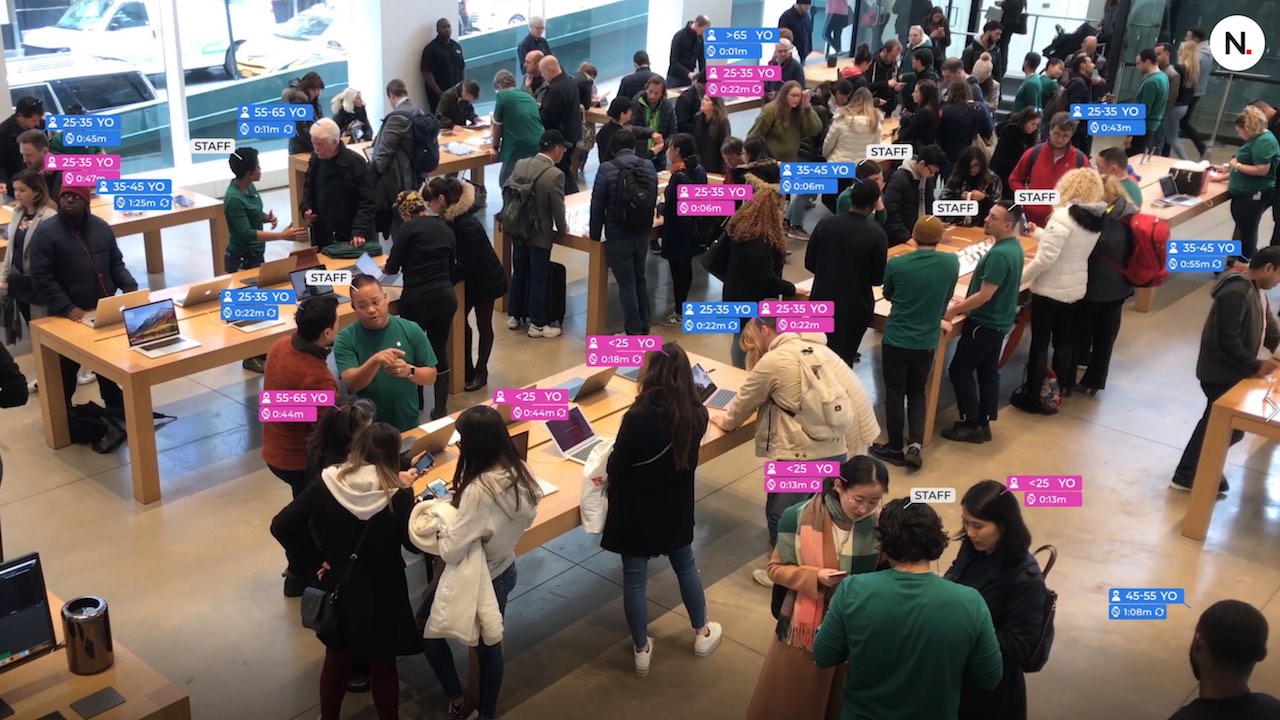Business leaders know that truly understanding their customers leads to better service. At the brick-and-mortar retail level, this means gaining a comprehensive understanding of customer behavior such as the number of shoppers, how they circulate inside the premises, what catches their attention, and how effectively sales associates tend to their needs.
Retail managers also face the challenge of adhering to new health and safety protocols as they relate to physical distancing and personal protective equipment (PPE) while providing a pleasant and engaging experience that keeps shoppers coming back. For digital out-of-home advertisers, it’s all about anonymous audience measurement.
The digital signage industry, and the integrators that install and deploy DOOH networks, are gradually addressing these needs with marketing analytics. Through integration with digital signage software, integrators can supply their end user—often retailers and quick-service restaurants, along with other physical businesses—with the tools they require to continuously improve how they welcome and serve customers.
[DSE 2021 Panel Discusses Managing DOOH Clients]
In measuring and monitoring a facility’s foot traffic at the granular level, this technology contributes to a broader customer experience integration project that helps the end business develop a true omnichannel strategy. With the appropriate focus, marketing analytics will touch everything from store access and layout to product selection and placement, in-store advertising, and even staffing. While marketing analytics platforms are typically a separate and standalone platform, we have a reached the stage where there can be true convergence with the digital signage ecosystem familiar to AV integrators.
Foot Traffic and In-Depth Marketing Analytics
Digital signage software integrated with marketing analytics monitors a visitor’s journey as they circulate through a physical retail space, providing managers with valuable information to enhance each customer’s experience, improve operations, and ensure the health and safety of visitors and staff. Powered by artificial intelligence (AI), the technology performs in-depth crowd analysis and content triggering based on real-time visual data it receives through its interpretation of live video feeds.
[The Technology Manager's Guide to the New Era of Digital Signage]
Performing much like web analytics, in-depth marketing analytics provides decision-makers with insight into how a physical business is performing down to the micro level. These tools analyze demographics (such as the age and gender of visitors), foot traffic (the route visitors take as they make their way through the site), dwell time (how long shoppers remain in a department, zone, or even in front of a specific display), the amount of time it takes before they are approached by a sales representative, how long shoppers must wait in line at the checkout, and how much time they spend in the store. Importantly, the best software will be able to identify and distinguish between new customers and returning ones.
All this information provides management with data that will inform staffing decisions. With insight into how many team members are required during specific times, as well as employee performance level, management can also make decisions that affect budgeting and the bottom line. In addition to helping manage staffing levels, these analytics offer guidance about areas where employees require more training.
Tracking the Attention Span of Visitors for DOOH Advertising
When paired with digital signage software, marketing analytics will help retailers make key decisions about their merchandising strategies by assessing visitor focal points.
An exciting element for the integrator is where these two elements—digital signage and marketing analytics—intersect with more traditional AV systems for added value. Cameras represent one very notable and important element for their end customers. The ability to interpret video feeds from cameras brings the added benefit of identifying which signage displays gain the most attention, and which are neglected. This presents an Opportunity to See (OTS) scenario for retailers that examines specific display placement to establish whether displays readily fall into a visitor’s line of sight, with metrics on the efficacy of in-store advertising campaigns. These same “level of attention” metrics can apply to specific items and product themes, as well as merchandising layouts and paths to purchase.
When calculating the number of people who were exposed to a specific ad, the interoperable systems will work together to consider anyone who looked directly at the screen, take note of their personal attributes, and determine how long they paid attention to the content while it was playing. This information is invaluable to advertising agencies and DOOH network operators who rely on programmatic systems to properly monetize their content.
Foot Traffic and Access Control
The pandemic has greatly impacted brick-and-mortar retail spaces. In response, innovation was accelerated that would help businesses return and reopen their stores to shoppers. AI-powered access control has been one very critical development, helping organizations meet new health and safety standards. Integrators have found opportunity by integrating these security solutions into the digital signage ecosystem, as well as camera systems that help them activate imperative occupancy monitoring requirements to meet emergent health and safety standards.
With more shoppers returning to stores, analytics software can further contribute to how businesses manage crowds. Retailers now have no choice but to monitor multiple entry points simultaneously, and the ability to count, screen, and guide visitors keeps crowds manageable and businesses in compliance with occupancy regulations.
To protect customers and employees, computer vision-enhanced digital signage solutions can detect whether visitors are wearing protective masks, and identify details about each mask’s fabric, shape, color, and pattern. This further empowers retailers to potentially customize health and safety-related occupancy instructions (or “house rules”) specific to a given location, so long as the business remains in compliance with local regulations. The ability to distinguish between visitors and employees will present management with the most accurate data.
Naturally, both integrators and businesses must address the legal concerns inherent in personal identification systems and remain fully compliant with privacy standards. This means choosing a marketing analytics platform that does not collect personally identifiable information (PII), or store or reuse personal data. Silhouette detection that includes face mask is acceptable, while facial recognition is not. In other words, all data collected by the system must remain anonymous and in compliance with local privacy laws.
With brick-and-mortar retailers, DOOH ad networks, and advertising agencies competing for consumers’ attention more fiercely than ever, providing an engaging, worthwhile experience is paramount. When businesses leverage the power digital signage software and marketing analytics have to offer, they gain a precise understanding of their customers’ behavior. This equips them with data that enables them to tailor their operations accordingly—on an ongoing basis, and in many cases in real time. The result: a more loyal, engaged customer base.
For systems integrators, this presents a new opportunity to build a more powerful retail customer experience strategy for their customers, along with a security element that potentially opens doors for future add-ons. For brick-and-mortar retailers, it’s a true opportunity to keep customers coming back versus relying almost exclusively on e-commerce.
Florent Hédiard is global marketing director at Navori Labs.

